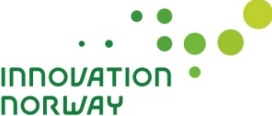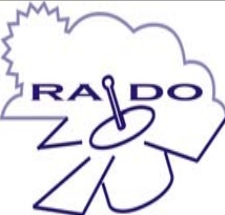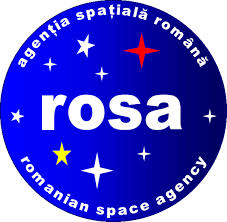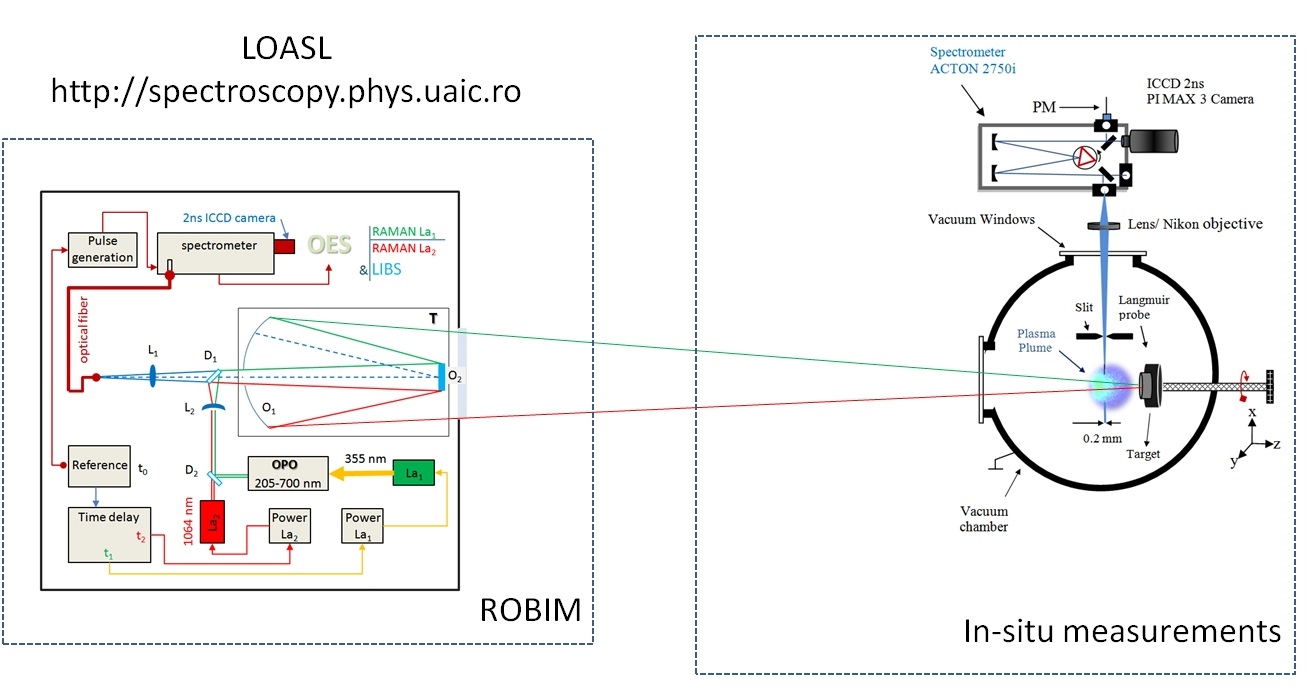Atmosphere Optics, Spectroscopy and Lasers Laboratory LOA-SL
|
MicroLIBS sensors for robotic planetary and astrobiological exploration missions (ROBIM) PN-III-P4-ID-PCE-2020-0332/ 04/01/2021- 31/12/2023 Contracting authority: Executive Unit for the Financing of Higher Education, Research, Development and Innovation (UEFISCDI) Name of the Program in PN III: P4 - Fundamental and frontier research Project type: Exploratory Research Projects, Budget 1.171.032 lei (~240.220 euro) Project Manager: Prof. PhD. Habil. Silviu-Octavian GURLUI The ROBIM project MicroLIBS sensors for robotic planetary and astrobiological exploration missions is focused research, to design and validate miniaturized equipment able to working in exploratory space missions with severe constrains (environment gas mixture, pressure, temperature, etc). Our technology is based to enhance the ablative and emissive stage of the plasma by means dual-pulse LIBS in order to enhance the analyte peak-to-base and signal-to-noise ratios, and atoms and ions line spectra. Taking into account the advantage of dual pulse LIBS technology, choosing various wavelengths and a high repetition rate of the lasers, we propose an instrument able to remote the chemical compounds behaviors in various environmental conditions based on the measurements obtained not only by LIBS but also by Raman coupled spectra according to each used laser. The obtained Raman spectra are dependent on time profile of the plasma plume and consequently we enhance the potential of the LIBS to investigate furthermore the phase changes and trace compound especially in the ice/soil mixture samples (depending on the temperature). Following, time-space resolved emissions Raman Spectroscopy is used to measures in a second the elemental compositions of the soil/rock.
Mai objetive: Creation of a compact instrument, space exploration diagnose techniques to remotely and investigate in severe environmental conditions (pressure, gas, temperature) the chemical composition of some targets using combined LIDAR / LIBS / RAMAN techniques by using combined laser pulses and space-time optical resolved spectroscopy. Increase the knowledge in an inter-disciplinary, up to date field, according to the severe limitations of real space working environment conditions, to find the best solution for detecting particle traces using minimum energies / laser pulse. Raise the standards of the inter-disciplinary basic research, through the co-operation of a critical mass of researchers from different research centres and high education institutes. Improve the performances of the research staff at a national and international level
Expected results: The expected results in the ROBIM project are related to the realization of a strong infrastructure, a new analytical tool used in a variety of severe environmental conditions (terrestrial atmosphere, space missions) able to analyse the traces of gas and soil compounds to identify the composition chemistry, to measure elemental temperature or densities. Experiments aim at a better understanding of the fundamental processes that take place in the evolution of transient plasma laser ablation in a variety of extreme environmental conditions. Although LIBS technology supports a large number of applications, the laser ablation mechanism (which depends on the wavelength, repetition rate, laser pulse width, target type or working gas, etc.) is not yet fully elucidated, especially in extreme conditions, such as those for space missions. Chitin deacetylation during deposition in DPL regime is observed in the OS-GLSS spectrum where there is only one peak in the 1800–1700 cm−1 range of C=O functional groups. The vibration at 1640 cm−1 is assigned to NH2 group resulting in the chitosan molecule after C=O group was removed in the deacetylation induced during DPL ablation of chitin. The crystalline structure and hard particles which were not crushed into powder during mortaring for the pellets produced for FTIR analysis were also indicated by the basic line shape of the Mie scattering effect. The missing peak in the 1800–1700 cm−1 range of C=O functional group in amides is also noticed for the spectra of the thin films deposited on the other supports (OS-HMP, OS-Y-GLSS, OS-Y-HMP). The increased sorption of water due to the chitosan thin film is also observed by the “noise-like” effect noticed mostly in the 4000–3500 cm−1 range on the OS-GLSS, OS-Y-GLSS, and OS-Y-HMP. As previously reported [1], for the high-power pulsed laser deposition of chitosan thin films from oyster shell targets on hemp fabric, the sorption of water is highly increased, as the OS-HMP spectrum proves by the very noisy spectrum line. Gas sorption could be also assigned to the noticed shape line of the spectrum. Important to notice is the effect on the yeast (Y-support) of the thin film of chitosan produced by DPL deposition mode from oyster shell. Comparing the Y-support spectrum to the Y-dry spectrum, a very significant change is noticed which denotes the chemical changes associated with the already noticed morphological changes in SEM images. The split of the 3565 cm−1–3469 cm−1 peak in two in the Y-support spectrum denotes NH2 group formation in the yeast cell molecule which denotes that C=O was eliminated as CO2 in the fermentation process. Depositing the chitosan thin film, yeast cells were either sealed and the fermentation process was interrupted, and the cells were “preserved”, or other cellular “restructuring” or “healing” processes took place through the interaction between the molecules of the particles that make up the thin film and the cells of yeast. To explain the phenomenon, in-depth microbiology studies are needed, including on other biological cells. In the case of using the hemp substrate covered with yeast paste for the deposition of chitosan by the DPL method, there is even a restoration of the molecular structure of the dry yeast, and the SEM images are in agreement with the results of the FTIR spectrum . It was also demonstrated with the study presented herein on Saccharomyces cerevisiae the property of thin layers of chitosan deposited by the DPL method to isolate biological materials from the environment, which leads to good preservation at the cellular level. By miniaturizing pulsed laser deposition systems, it will be possible to “encapsulate” biological cells as well as other materials collected from hostile environments, including during space missions. These materials could be transported in the DPL chitosan-encapsulated form and later studied.
Report 2023 (link pdf here) List of publications 1. Cocean, A.; Cocean, G.; Diaconu, M.; Garofalide, S.; Husanu, F.; Munteanu, B.S.; Cimpoesu, N.; Motrescu, I.; Puiu, I.; Postolachi, C.; Cocean, I.; Gurlui, S. Nano-biocomposite materials obtained from laser ablation of hemp stalks for medical applications and potential component in new solar cells. International Journal of Molecular Sciences 2023, 24, 3892. https://doi.org/10.3390/ijms24043892 2. Kadri, L.; Abderrahmane, A.; Bulai, G.; Carlescu, A.; Doroftei, C.; Motrescu, I.; Gurlui, S.; Leontie, L.; Adnane, M. Optical and structural analysis of TiO2-SiO2 nanocomposite thin films fabricated via pulsed laser deposition technique. Nanomaterials 2023, 13, 1632. https://doi.org/10.3390/nano13101632 3. Sprincean, V.; Leontie, L.; Caraman, I.; Lupan, O.; Adeling, R.; Gurlui, S.; Carlescu, A.; Doroftei, C.; Caraman, M. Preparation, chemical composition, and optical properties of (β-Ga2O3 composite thin films)/(GaSxSe1-x lamellar solid solutions) nanostructures. Nanomaterials 2023, 13, 2052. https://doi.org/10.3390/nano13142052 4. Cocean, G.; Cocean, A.; Garofalide, S.; Pelin, V.; Munteanu, B.S.; Pricop, D.A.; Motrescu, I.; Dimitriu, D.G.; Cocean, I.; Gurlui, S. Dual-pulsed laser ablation of oyster shell producing novel thin layers deposed to Saccharomyces cerevisiae. Polymers 2023, 15, 3953. https://doi.org/10.3390/polym15193953 5. Balbarau, A.; Ivanescu, L.M.; Martinescu, G.; Rimbu, C.M.; Acatrinei, D.; Lazar, M.; Cocean, I.; Gurlui, S.; Cocean, A.; Miron, L. Septicemic outbreak in a rainbow trout intensive aquaculture system: Clinical finds, etiological agents, and predisposing factors. Life 2023, 13, 2083. https://doi.org/10.3390/life13102083 6. M. Diaconu, S. Garofalide, G. Cocean, A. Cocean, D. A. Pricop, I. Cocean and S. Gurlui, Physico-chemical degradation of some land-fill wastes contaminating on surface and ground surrounding waters, INTERNATIONAL JOURNAL OF CONSERVATION SCIENCE Volume 14, Issue 3, July-September 2023: 1045-1056, DOI: 10.36868/IJCS.2023.03.17 Conferences 1. Alexandru Cocean, Georgiana Cocean, Silvia Garofalide, Vasile Pelin, Dana Angelica Pricop, Bogdanel Silvestru Munteanu, Nicanor Cimpoesu, Dan Gheorghe Dimitriu, Iuliana Cocean and Silviu Gurlui, Numerical simulation in assisting the experimental study as a tool for estimating the working parameters, anticipating and explaining the experimental results. COMSOL Multiphysics and Gaussian 6 software, Conferința FTEM (Fizica și Tehnologiile Educaționale Moderne) 20 mai 2023, http://ftem.faculty.ro/ 2. Georgiana Cocean, Alexandru Cocean, Silvia Garofalide, Cristina Postolachi, Maria Diaconu, Francisca Husanu, Bogdanel Silvestru Munteanu, Nicanor Cimpoesu, Iuliana Motrescu, Ioan Puiu, Iuliana Cocean and Silviu Gurlui, Hemp stalk components transfer into composite nanostructures under high power pulsed laser ablation and deposition to produce functional materials, Conferința FTEM (Fizica și Tehnologiile Educaționale Moderne) 20 mai 2023, http://ftem.faculty.ro/ 3. Cocean, G.; Cocean, A.; Postolachi, C.; Garofalide, S.; Pricop, D.A.; Munteanu, B.S.;Cocean, I.; Gurlui, S.; Saccharomyces cerevisiae and Fourier Transform Infrared Spectroscopy technique used to identify photo-chemical processes during laser ablation of hemp stalk, 4th International Workshop Advances on Photocatalysis (https://photocatalysis-workshop.eu/), 25-28 iulie 2023, online poster session (https://photocatalysis-workshop.eu/program/). 4. Postolachi, C.; Cocean, A.; Cocean, G.; Garofalide, S.; Pricop, D.A.; Munteanu, B.S.; Cimpoesu, N.; Motrescu, I.; Cocean, I.; Gurlui, S.; High pulsed laser energy to produce structural morphology of thin layers for green chemical processes, 4th International Workshop Advances on Photocatalysis (https://photocatalysis-workshop.eu/), 25-28 iulie 2023, online poster session (https://photocatalysis-workshop.eu/program/). 5. IASI ACADEMIC DAYS, XXXVIII Edition, National Scientific Session Vectors of Rural Development in the North-East Region of Romania (III Edition) Sustainable agro-food systems October 12, 2023, Alexandru Cocean, Georgiana Cocean, Cristina Postolachi, Silvia Garofalide, Diana Manuela Lina, Vasile Pelin, Maria Diaconu, Daniela Angelica Pricop, Răzvan Ababei, Dan Gheorghe Dimitriu, Bogdănel Silvestru Munteanu, Georgiana Bulai, Nicanor Cimpoeșu, Iuliana Motrescu, Ioan Puiu, Iuliana Cocean and Silviu Gurlui, Cutting-edge technology based on laser interaction with the matter involved in the development of the rural economy. Its applicability in the short term and in the long term /Cutting-edge technology based on the interaction of laser with matter involved in the development of rural economy. Its short-term and long-term applicability; The scientific session took place online, on October 12, 2023, between 9:30 a.m. and 4:30 p.m., on the Zoom platform. -presentation Iuliana Cocean
Report 2022 (link pdf here) List of publications 1. Alexandru Cocean, Cristina Postolachi, Georgiana Cocean, Georgiana Bulai, Bogdanel Silvestru Munteanu, Nicanor Cimpoesu, Iuliana Cocean and Silviu Gurlui, The Origin and Physico-Chemical Properties of Some Unusual Earth Rock Fragments, Appl. Sci. 2022, 12, 983. https://doi.org/10.3390/app12030983 2. Silvia Garofalide, Cristina Postolachi, Alexandru Cocean, Georgiana Cocean, Iuliana Motrescu, Iuliana Cocean, Bogdanel Silvestru Munteanu, Marius Prelipceanu, Silviu Gurlui and Liviu Leontie, Saharan Dust Storm Aerosol Characterization of the Event (9 to 13 May 2020) over European AERONET Sites, Atmosphere 2022, 13, 493. https://doi.org/10.3390/ atmos13030493 3. Georgiana Cocean, Alexandru Cocean, Cristina Postolachi, Silvia Garofalide, Georgiana Bulai, Bogdanel Silvestru Munteanu, Nicanor Cimpoesu, Iuliana Cocean and Silviu Gurlui, High-Power Laser Deposition of Chitosan Polymers: Medical and Environmental Applications. Polymers 2022, 14, 1537. https:// doi.org/10.3390/polym14081537 4. Irimiciuc, S.; Zaharia, M.G.; Cimpoesu, R.; Bulai, G.; Gurlui, S.O.; Cimpoesu, N. On the Deposition Process of Ceramic Layer Thin Films for Low-Carbon Steel Pipe Protection. Materials 2022, 15, 4673. https:// doi.org/10.3390/ma15134673 5. Sprincean, V.; Leontie, L.; Caraman, I.; Untila, D.; Girtan, M.; Gurlui, S.; Lisnic, P.; Doroftei, C.; Carlescu, A.; Iacomi, F.; et al. Optical and Photosensitive Properties of Flexible n (p)–InSe/In2O3 Heterojunctions. Materials 2022, 15, 3140. https://doi.org/10.3390/ ma15093140
Conferences 1) Cocean, A., Postolachi, C., Cocean, G., Garofalide, S., Bulai, G., Munteanu, B. S., Cimpoesu, N., Motrescu, I., Pelin, V., Cocean, I. and Gurlui, S., High pulsed power laser inducing phase change - chemical transformations. Coupled modeling and analytical chemistry techniques. International Conference onAnalytical and Bioanalytical Techniques, Bio Analytica 2022; 5-7 September 20222 - speaker: Alexandru Cocean(5 september 2022) https://magnusconferences.com/bio-analytical-chemistry/speakers/2022 ; https://magnusconferences.com/bio-analytical-chemistry/speaker/alexandru-coceanș https://magnusconferences.com/bio-analytical-chemistry/uploads/pdfs/final-program-live-now.pdf 2) Cocean, A., Garofalide, S., Pelin, V., Cocean, G.,Postolachi, C., Motrescu, I. , Leontie, L., Cocean, I. and Gurlui, S., Study of the efficiency of solar cells in polluted environments: advanced analysis techniques in vivo and in the laboratory, through COMSOL type simulations, 14th International Conference on Physics of Advanced Materials (ICPAM-14) and the 5th Autumn School on Physics of Advanced Materials (PAMS-5); 8-15 September2022, Dubrovnik, Croatia, presenting author: Silvia Garofalide. 3) Cocean, A., Postolachi, C., Cocean, G.,Bulai, G., Garofalide, S., Pelin, V., Munteanu, B. S., Cimpoesu, N., Motrescu, I., Cocean, I. and Gurlui, S., Laser plasma threshold. Numerical study in COMSOL, International Conference 3NANO 2022; Nano Science/Technology/Biotechnology; ROMA, 20 - 23 September 2022; Topic: Theoretical modeling and computer simulations; presenting author: Georgiana Bulai (https://www.3nano.it/home)
Report 2021 (link pdf, here) Experimental ROBIM double pulse laser assemblies for LIBS and atmospheric measurements - LIDAR The novel LOASL- LIDAR The installation consists of the use of the following optical and spectrometric components: • 2 pulsed lasers with a repetition rate of 10 Hz, wavelengths of 1064 nm, 532 nm, 355 nm and 266 nm. • Laser pulse delay generator that operates in the same optical field coupled to the multichannel oscilloscope for the analysis of laser pulses and the delay time between them. • Optical telescope for investigating backscattering radiations from the atmosphere following the interaction of the laser pulse coupling with aerosols. • Two laser beam expanders corresponding to the two laser beams used in the integrated LIDAR system (with the role of widening the interaction surface of the laser beams with the aerosols in the atmosphere) • Optical systems for guiding backscattering radiations to the spectrometric system • Monochromator (f = 750 mm) - Princeton Instruments SP 2750 (Triple Diffraction Spectrometer and Optical Imaging System coupled with ICCD PI-Max ultra-fast intensifying camera with 2 ns integration time The installation allows the recording of RAMAN spectra induced by the de-excitation of molecular systems in the atmosphere under the action of incident laser beams, with pulses shifted temporally and superimposed in the same field in space, to obtain a significant increase in signal-to-noise ratio, chemical compound, from the atmosphere, located on different atmospheric layers, at high altitude. Some images recorded with the realization and development of this new ROBIM equipment are presented together: ROBIM experimental installation of the LIDAR with double laser pulse with controlled delay for investigations of the atmospheric chemical composition, at variable altitude, with a temporal resolution of up to 2 ns.
LIBS experimental set-up with double pulses laser This assembly involves the use of optical components to guide and focus two laser optical beams in a well-defined area on materials under controlled environmental conditions (gas pressure, gas composition, temperature). The installation is made so that the two laser pulses are focused at the same point on the analyzed sample and the pen (cloud of laser ablation particles) has a vertical expansion direction, along the direction of the spectroscope slit. During this time, the entire sample guidance system has a controlled, computerized motion of two stepper motors and a motion path defined by dedicated software. The transient laser plasma is analyzed and resolved in space and time by various electrical and spectral diagnostic systems (we use the same SP2750i spectrometer coupled with the PIMAX-3, 2 ns camera). The system allows the sampling of laser ablation plasma into slices up to 0.2 mm thick, each slice being subjected to spectral and imaging investigations, resolved over time. Some images of the installation made, with double laser pulse, are presented below:
ISI papers:
Conferences: ICPAM 13: 24 -30 September 2021 [1]. Alexandru COCEAN, Cristina POSTOLACHI, Silvia GAROFALIDE, Diana PATA, Maria DIACONU, Francisca HUSANU, Georgiana BULAI, Bogdan MUNTEANU, Nicanor CIMPOESU, Dan- Gheorghe DIMITRIU, Iuliana COCEAN, Silviu GURLUI, Dual-pulse ns-laser-induced Raman and breakdown spectroscopy to enhance performance on atoms and molecular detection [2]. Alexandru COCEAN, Iuliana COCEAN, Georgiana COCEAN, Cristina POSTOLACHI, Bogdanel Silvestru MUNTEANU, Nicanor CIMPOESU and Silviu GURLUI, Keratin-based polymer nanofilm membranes for medical applications [3]. Cristina POSTOLACHI, Alexandru COCEAN, Iuliana COCEAN, Georgiana COCEAN, Bogdanel Silvestru MUNTEANU, Nicanor CIMPOESU, and Silviu GURLUI, Study of Si/SiO2 core/shell Quantum Dots produced by Pulsed Laser Deposition.
AdvPhotoCat-EE2021 (28 - 29 June 2021) [1]. Invited Speaker: Silviu Gurlui: Trace elements Photo-Analysis for environmental applications: a case study, Alexandru Cocean, Iuliana Cocean, Georgiana Bulai, Cristina Postolachi, Bogdan Munteanu, Nicanor Cimpoesu, Silviu Gurlui [2]. Oral Presentation: Laser induced chitin deacetylation- cutting-edge technology for "natural biological waste”, Alexandru COCEAN, Iuliana COCEAN, Cristina POSTOLACHI, Georgiana COCEAN and Silviu GURLUI [3]. Oral Presentation: Photo-degradation of some landfill contaminants on the surrounding waters, Iuliana COCEAN, Maria DIACONU, Alexandru COCEAN, Cristina POSTOLACHI and Silviu GURLUI [4]. Poster Presentation: AMC-COMSOL: the new finite element technique to increase solar cell conversion, Alexandru Cocean, Dorin Botoc, Monica Siroux, Cristina Postolachi, Iuliana Cocean, Silviu Gurlui [5]. Poster Presentation: Quantum Dots Pulsed Laser Deposition – a new simulation technique, Alexandru Cocean, Cristina Postolachi, Iuliana Cocean, Silviu Gurlui [6]. Poster Presentation: CdSe Quantum Dots insertion effect on the alpha-keratin PLD-thin films, Cristina POSTOLACHI, Mirela SUCHEA, Ioan-Valentin TUDOSE, Alexandru COCEAN, Iuliana COCEAN, Bogdanel Silvestru MUNTEANU, Nicanor CIMPOESU and Silviu GURLUI [7]. Poster Presentation: Chemical processes induced by light on the AuNP-citrate surface, Daniela Angelica PRICOP, Alexandru COCEAN, Florin BRANZA, Cristina POSTOLACHI, Iuliana COCEAN, Adina COROABA, Dorina Emilia CREANGA, Felicia IACOMI, Silviu GURLUI [8]. Poster Presentation: High pulsed-laser effect on the hemp composite - advanced materials, Iuliana COCEAN, Alexandru COCEAN, Cristina POSTOLACHI, Bogdanel Silvestru MUNTEANU, Nicanor CIMPOESU and Silviu GURLUI [9]. Poster Presentation: Light interaction, pollution and SARS-Cov2: protection Mask biocompatibility-overview, Silviu Gurlui, Alexandru Cocean, Cristina Postolachi,Georgiana Cocean, Iuliana Cocean [10]. Poster Presentation: Washing municipal streets – the origin of some photo-contaminants pollution, Iuliana COCEAN, Maria DIACONU, Silvia GAROFALIDE, Alexandru COCEAN, Cristina POSTOLACHI, Vasile PELIN and Silviu GURLUI [11]. Poster Presentation: Huge ice lump fell from the atmosphere: effect of complex cumulative pollution phenomenon, Iuliana COCEAN, Daniela Angelica PRICOP, Alexandru COCEAN, Francisca HUSANU, Nicanor CIMPOESU, Bogdanel MUNTEANU, Maria DIACONU, Cristina POSTOLACHI and Silviu GURLUI [12]. Poster Presentation: Photochemical effects on heritage asset because environmental stress, Vasile PELIN, Alexandru COCEAN, Cristina POSTOLACHI, Silvia GAROFALIDE, Francisca HUSANU, Iuliana COCEAN and Silviu GURLUI
|





